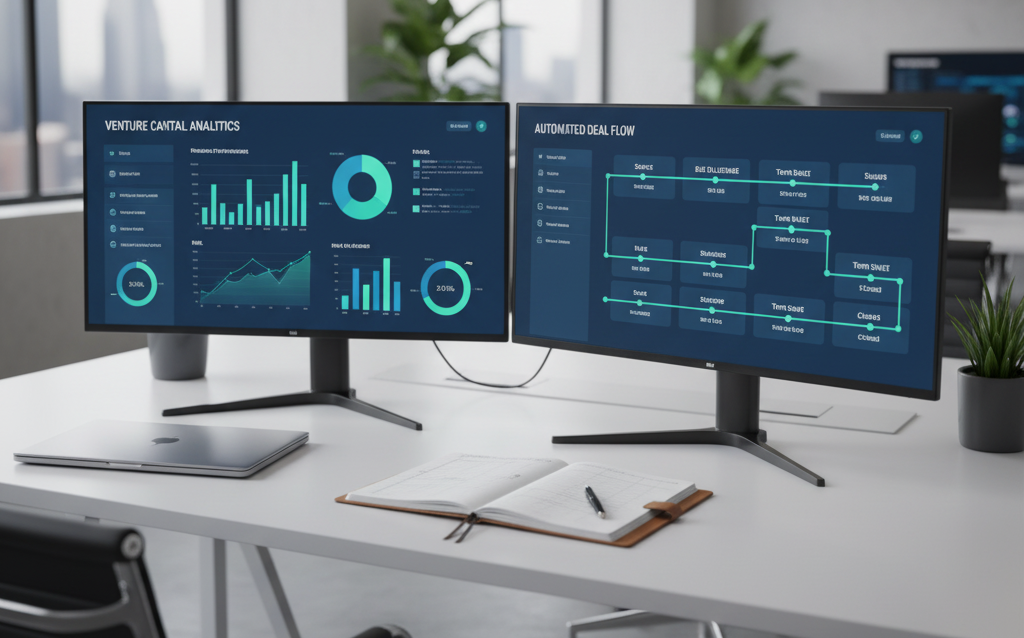
From Spreadsheet Fatigue to Analytics Nirvana: How VC Funds Automate Research
The Research Burden Nobody Talks About
Every venture capital analyst knows the grind – endless spreadsheets, messy data, and late-night updates before partner meetings. On average, analysts spend more than 20 hours a week manually updating deal pipelines, tracking metrics, and building market models.
The problem? VC deal flow has exploded. What used to be 50 deals a year is now 500. Yet, many firms still rely on Excel sheets and email threads. When a partner asks for “updated ARR numbers” mid-meeting, someone scrambles to patch a broken formula before the conversation moves on.
This system might have worked a decade ago, but it simply can’t scale today. Recognizing this, many forward-thinking firms, including those Product Siddha partners with — have started rebuilding their research and analytics infrastructure from the ground up.
Where Manual Processes Break Down
The inefficiency starts at data collection. Startups share financials in wildly different formats – PDFs, decks, or screenshots. Some highlight GMV, others focus on retention or CAC. Analysts must normalize all this manually, increasing the risk of errors.
Then comes market research – scanning competitors, reading sector reports, tracking news, scraping data from Crunchbase or LinkedIn. A single competitive analysis can take eight hours or more.
And even after investment, the problem persists. Portfolio monitoring becomes chaotic when companies use different KPIs and reporting schedules. Comparing ARR from one firm to MAU from another becomes a nightmare.
The human toll is real. Analysts join venture capital to find great startups, not to spend nights copying numbers from one spreadsheet to another. As one associate at a mid-sized Bangalore VC fund said, “We weren’t researching companies anymore. We were researching Excel errors.”
The Automated Alternative
Automation has started rewriting the rules of VC research. Tools now exist that can extract, standardize, and analyze data across multiple sources with minimal human effort.
- Data extraction tools use Optical Character Recognition (OCR) and NLP to read pitch decks and identify key metrics automatically.
- Market intelligence platforms such as Crunchbase Pro, PitchBook, and CB Insights track funding rounds, leadership changes, and product trends in real time.
- Deal flow management systems like Affinity and Airtable Ventures organize conversations, notes, and follow-ups automatically.
- Portfolio monitoring tools such as Visible.vc or Carta Total Compensation provide real-time dashboards for key metrics.
With these systems, analysts can generate complete deal profiles in minutes instead of hours, freeing time for actual investment analysis.
Real Implementation Examples
Authentic change is already underway across global VC firms.
- Andreessen Horowitz (a16z) uses custom-built internal analytics to track startup traction, funding velocity, and category momentum. Analysts receive live dashboards instead of static reports.
- Accel Partners uses automated data pipelines to integrate startup submissions directly into its CRM, eliminating manual entry and ensuring data freshness.
- Sequoia Capital India integrates automation into its “Surge” program to evaluate early-stage startups faster, using structured founder forms and AI-assisted screening tools.
And in one case, a mid-sized venture fund in Bangalore that Product Siddha partnered with automated its research workflows. Before automation, analysts spent 60% of their week on repetitive data entry. After deploying an AI-powered research assistant and portfolio dashboard, that dropped to 15%. The firm’s investment pace increased by 40% – without expanding the team.
Building the Right System
Successful automation doesn’t begin with software – it starts with strategy. Funds must identify which pain points cost the most time and accuracy before adopting tools.
- Document the current process. Map every step analysts take from sourcing to reporting.
- Integrate before you automate. Ensure tools connect seamlessly – deal flow data should move from CRM to analytics to presentation decks automatically.
- Customize workflows. No two VC firms evaluate deals the same way. Systems should adapt to internal logic, not force uniformity.
- Train the team. Many automation projects fail because teams don’t fully adopt them. Internal champions and regular workshops are key.
A hybrid setup usually works best: automated data intake combined with human judgment for validation and insight.
The Changing Role of Analysts
Automation doesn’t replace analysts – it liberates them. Instead of spending hours cleaning data, they spend time interpreting it. Instead of preparing reports, they analyze investment patterns and founder quality.
The new analyst profile looks different:
- They understand automation tools and APIs as well as financial models.
- They can ask sharper questions because software has already answered the obvious ones.
- They spend more time building relationships and sourcing founders – the work that truly differentiates top-tier VC firms.
Firms like Lightspeed Venture Partners and First Round Capital exemplify this. Their analysts use data-driven platforms for research but rely on human intuition for conviction. The technology enhances judgment – it doesn’t replace it.
Worth the Investment
Automation comes with upfront costs – software, integration, and team training. Smaller funds might spend $30,000 per year; large global funds may invest upwards of $200,000.
But the ROI is immediate:
- Time savings often cover the expense within a year.
- Data accuracy improves investment decisions.
- Analyst retention rises because the job becomes more meaningful.
As one partner at a Singapore-based early-stage fund said after automating their research workflows, “We stopped paying analysts to clean data – and started paying them to find unicorns.”
Rethinking VC Operations
Venture capital’s competitive edge now depends on data velocity – how quickly a firm can turn information into conviction.
Manual research models simply can’t keep pace. Funds that embrace automation gain the ability to evaluate more opportunities, monitor portfolio performance in real time, and act on insights faster than rivals.
The transformation Product Siddha observes across the global investment ecosystem points to a clear future: within five years, manual spreadsheet-based research will be as outdated as faxed pitch decks. The firms building automated, analytics-driven research ecosystems today will define the next generation of venture capital excellence.
